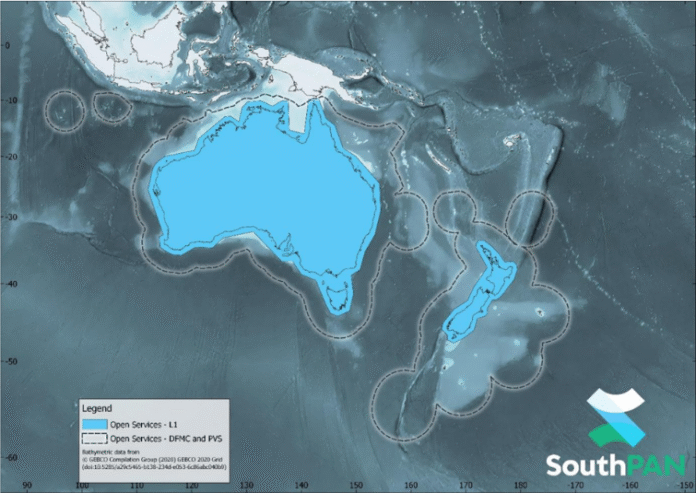New SouthPAN Agreement Ushers in a New Era for WA’s Satellite Navigation
A landmark $252 million contract has been inked to boost Australia’s sovereign satellite positioning network – SouthPAN. The deal, forged between Geoscience Australia and Inmarsat Australia (now part of a combined entity following its merger with Viasat), promises to deliver unprecedented accuracy and reliability across Australia and New Zealand. As the federal government continues its longstanding commitment, set at $1.4 billion over 19 years, industry experts and government officials alike see SouthPAN as a transformative development for critical sectors from mining and agriculture to aviation and maritime operations in Western Australia.
A Bold Technological Leap
The Southern Positioning Augmentation Network, or SouthPAN, expands on Australia’s ambition to develop homegrown capabilities in satellite-based navigation. Designed to ensure robust, precise positioning through an integrated network of satellite and ground infrastructure, SouthPAN marks a significant departure from relying solely on foreign systems. Minister for Resources and Northern Australia Madeleine King, who plays a pivotal role in the project, emphasised that the new agreement is not merely an operational upgrade but a strategic investment in national infrastructure. The system’s promise of accuracy – providing horizontal positioning within 10 centimetres and vertical accuracy around 20 centimetres – could well transform safety and efficiency across the nation’s transport and industrial sectors.
Historical Context and Policy Backdrop
SouthPAN is not an overnight development. Its origins can be traced back to Australia’s 2016 strategic reviews, which identified the need for a sovereign satellite positioning system. As documented on Geoscience Australia’s website, the initiative was forged as part of a broader policy shift towards reducing reliance on overseas services. The decision to invest nearly $1.5 billion over two decades was crystallised in government budgets and policy papers, aligning it with other major investments in space-based infrastructure such as the Australian Space Agency’s early projects and the national positioning initiatives of previous years.
The current contract continues this trajectory. Inmarsat Australia’s portfolio – now bolstered by the Viasat merger – is tasked with both sustaining services from existing satellites and launching a new payload on its I-8 constellation. This is a crucial step towards SouthPAN’s anticipated certification as a safety-of-life service for aviation by 2028. When fully operational, this capability will underpin critical services like medivac flights, ensuring safer operations in variable weather conditions and supporting life-critical decision-making in real time.
Implications for Western Australia
For Western Australia, the SouthPAN project is poised to yield significant economic and operational benefits. WA’s mining sector, a dominant contributor to the state’s economy, stands to gain from enhanced precision in autonomous vehicle navigation and worker safety solutions. With mining operations increasingly relying on sophisticated location-based systems, a high-precision network such as SouthPAN could reduce operational hazards and improve productivity.
WA’s vast agricultural landscapes are also set to benefit. Precision agriculture – which relies on accurate positioning for techniques such as yield mapping, controlled traffic farming and precision seeding – is a natural fit for SouthPAN’s technological capabilities. WA farmers, responsible for a substantial share of Australia’s wheat exports, could see efficiencies crop up across the board, ranging from input cost reductions to enhanced crop monitoring.
Maritime operations in WA’s waters, particularly in bustling hubs like Fremantle Port, are another key beneficiary. Enhanced satellite navigation will support vessel traffic management, cargo handling and operational safety for both commercial and defence applications. As the system covers extensive maritime zones, WA’s coastal and offshore activities will be better integrated into national and regional networks, ensuring improved safety and operational coordination.
Joint Efforts and International Parallels
SouthPAN is a rare example of regional cooperation; it is a joint initiative between Australia and New Zealand, managed by Geoscience Australia in partnership with Toitū Te Whenua Land Information New Zealand. Early services, which have been available since 2022, underscore the practical benefits of this collaboration – benefits that extend far beyond the laboratory and into the daily operations of industry and emergency services across both nations.
Across the globe, similar systems have been implemented to enhance positioning accuracy. Europe’s EGNOS and Japan’s QZSS are comparable projects that have provided critical support to their regional economies. SouthPAN, however, is uniquely adapted to cover expansive maritime jurisdictions as well as Australia’s rugged interior. By tailoring the system to the specific geospatial and operational challenges faced in the Asia-Pacific region, SouthPAN offers an integrated solution that addresses both terrestrial and maritime needs.
Technical and Regulatory Considerations
While the promise of SouthPAN is clear, the journey to full operational capability has its challenges. The target for safety-of-life certification by 2028 means navigating a complex web of technical and regulatory requirements. The Civil Aviation Safety Authority (CASA) will play an essential role in certifying the system for critical aviation applications, ensuring that the technology meets the rigorous standards necessary for life-saving operations.
Furthermore, the increasing sophistication of cyber threats requires robust security measures to safeguard this critical national infrastructure. The Australian Cyber Security Centre has repeatedly underscored the potential vulnerabilities inherent in space-based systems. As SouthPAN’s capabilities expand, the need for integrated cybersecurity protocols will become ever more pressing, ensuring that the network remains resilient against both technical failures and malicious attempts.
Looking Ahead
The $252 million contract signifies more than just another line item in government expenditure – it heralds a new era of precision, safety and operational excellence that resonates far beyond Canberra’s corridors of power. For WA’s miners, farmers, port operators and emergency services, enhanced satellite positioning could transform operational practices, improve safety standards, and drive economic benefits that reinforce the state’s competitive edge on the global stage.
In an era where technology and infrastructure are inextricably linked to prosperity and safety, SouthPAN stands as a testament to Australia’s commitment to remaining at the forefront of innovation. As the system evolves and expands, stakeholders from Western Australia and beyond will be watching closely – hopeful that this transformative project will bring with it a new level of precision and reliability to some of the nation’s most critical sectors.
For more in-depth details on SouthPAN’s performance and ongoing developments, readers are encouraged to refer to Geoscience Australia’s official SouthPAN overview and associated government publications.

